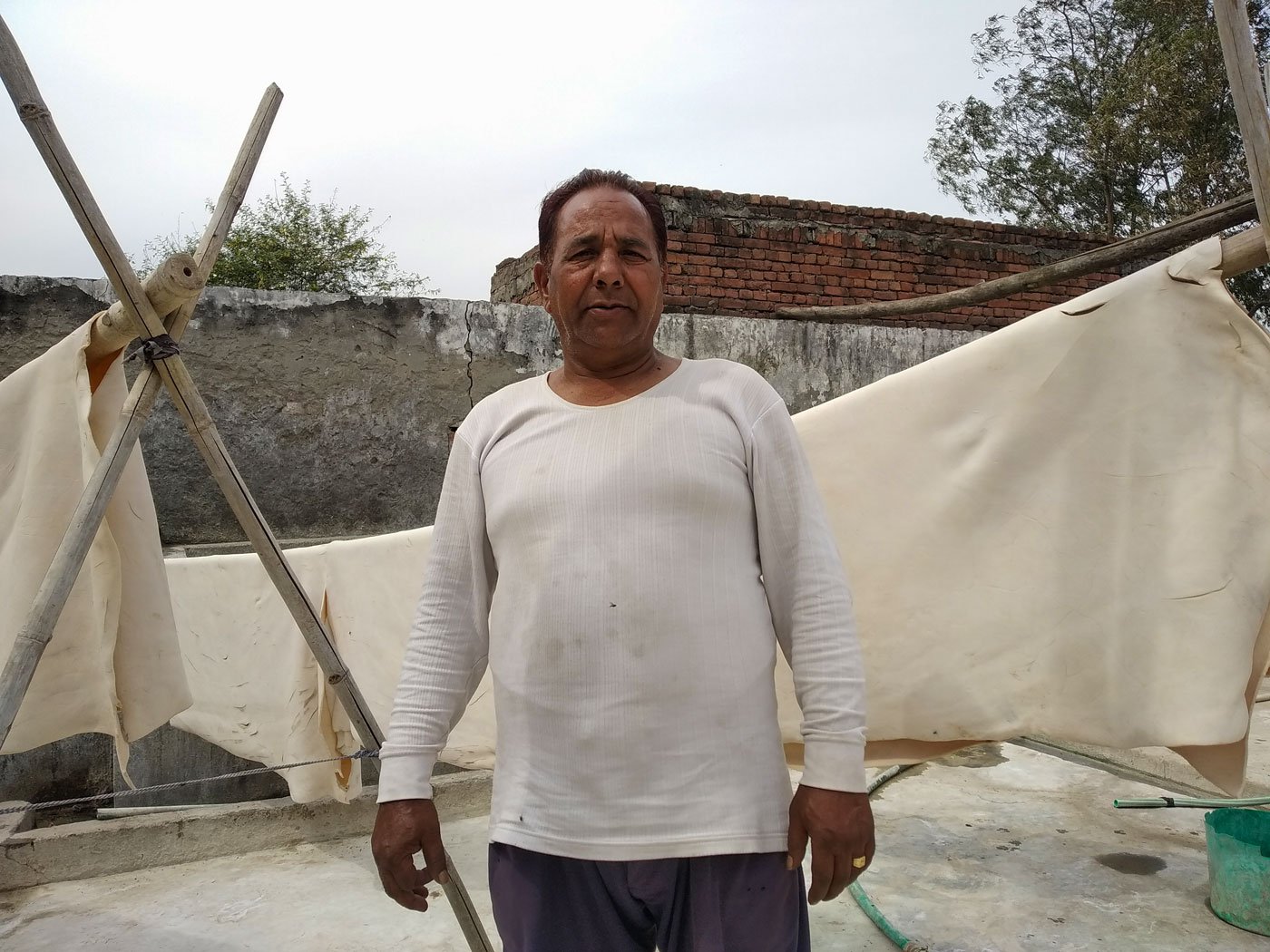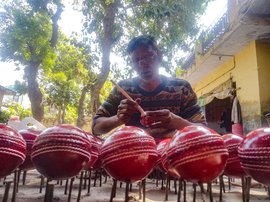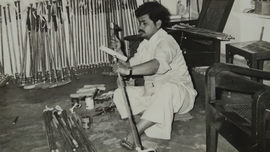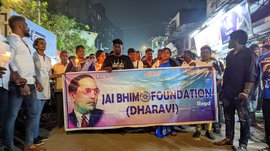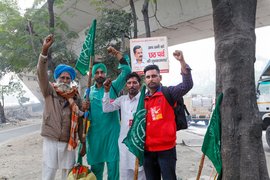“If we stop working, the entire country will be unhappy.”
Babu Lal’s statement is better understood when he follows it up by saying, “Cricket khelne ko nahi milega kisiko bhi [no one will be able to play cricket].”
The red and white cricket ball, loved and feared by batters and bowlers, and keenly watched by millions of spectators, is made of leather that comes from tanneries located in Shobhapur, a slum in Meerut, Uttar Pradesh. It is the only locality in the city where leather-workers process raw hides using the alum-tanning method to arrive at this essential raw material for the cricket ball industry. ‘Tanning’ is the process of transforming raw hides into finished leather.
“Only alum tanning can open up the grains of the hide and allow rang [colour] to pass through it easily,” says Babu Lal. His statement is backed by the Central Leather Research Institute’s research in the sixties that said alum-tanning ensured that perspiration from a bowler’s hand or application of sweat/saliva to shine the cricket ball would not damage the ball – and cause the bowler to throw the match away.
The sixty-two-year-old is seated on a plastic chair in a corner of the tannery he owns here in Shobhapur; the lime whitewashed floor is gleaming. “Our ancestors have been making leather for 200 years here,” he says.
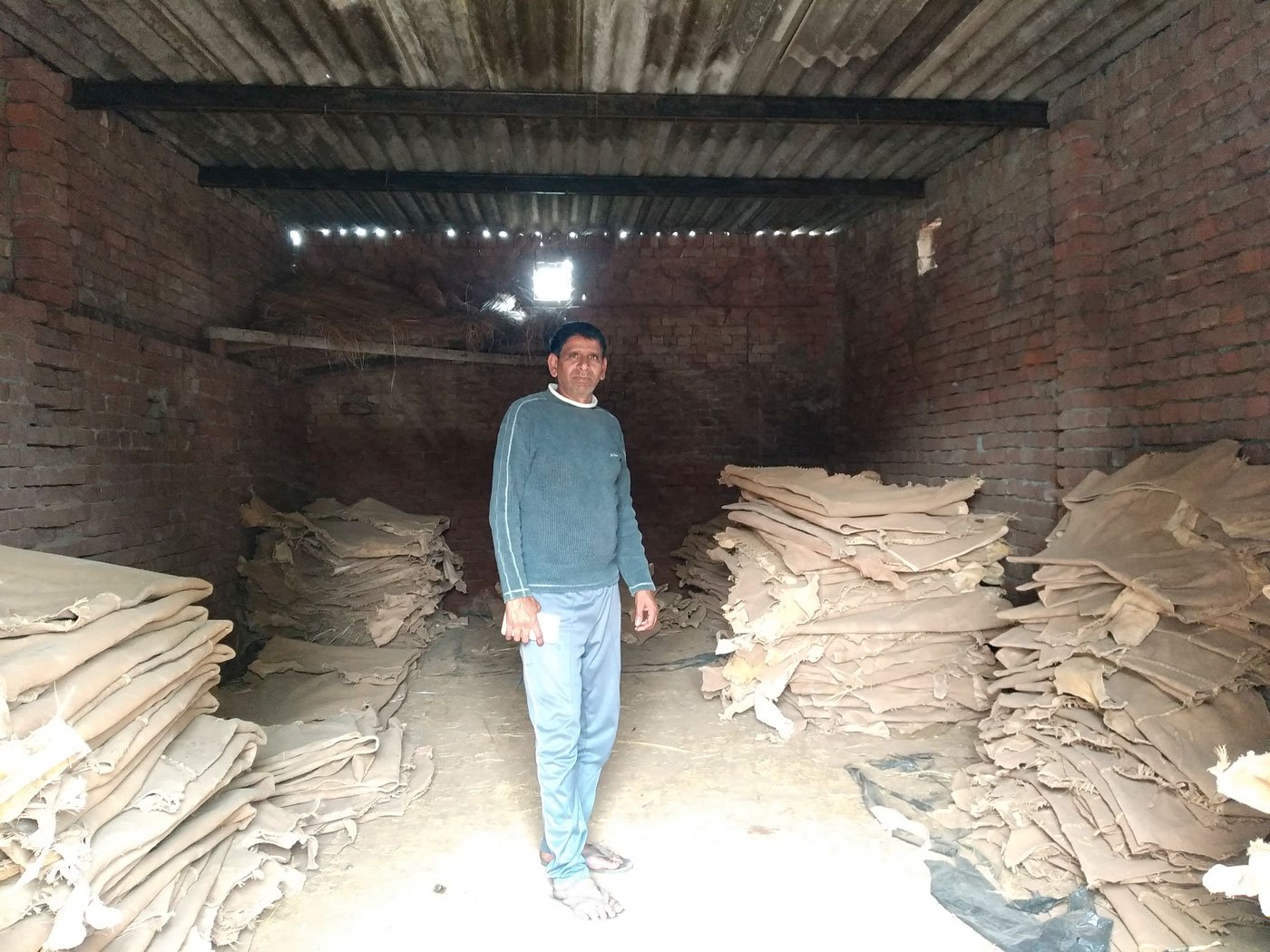
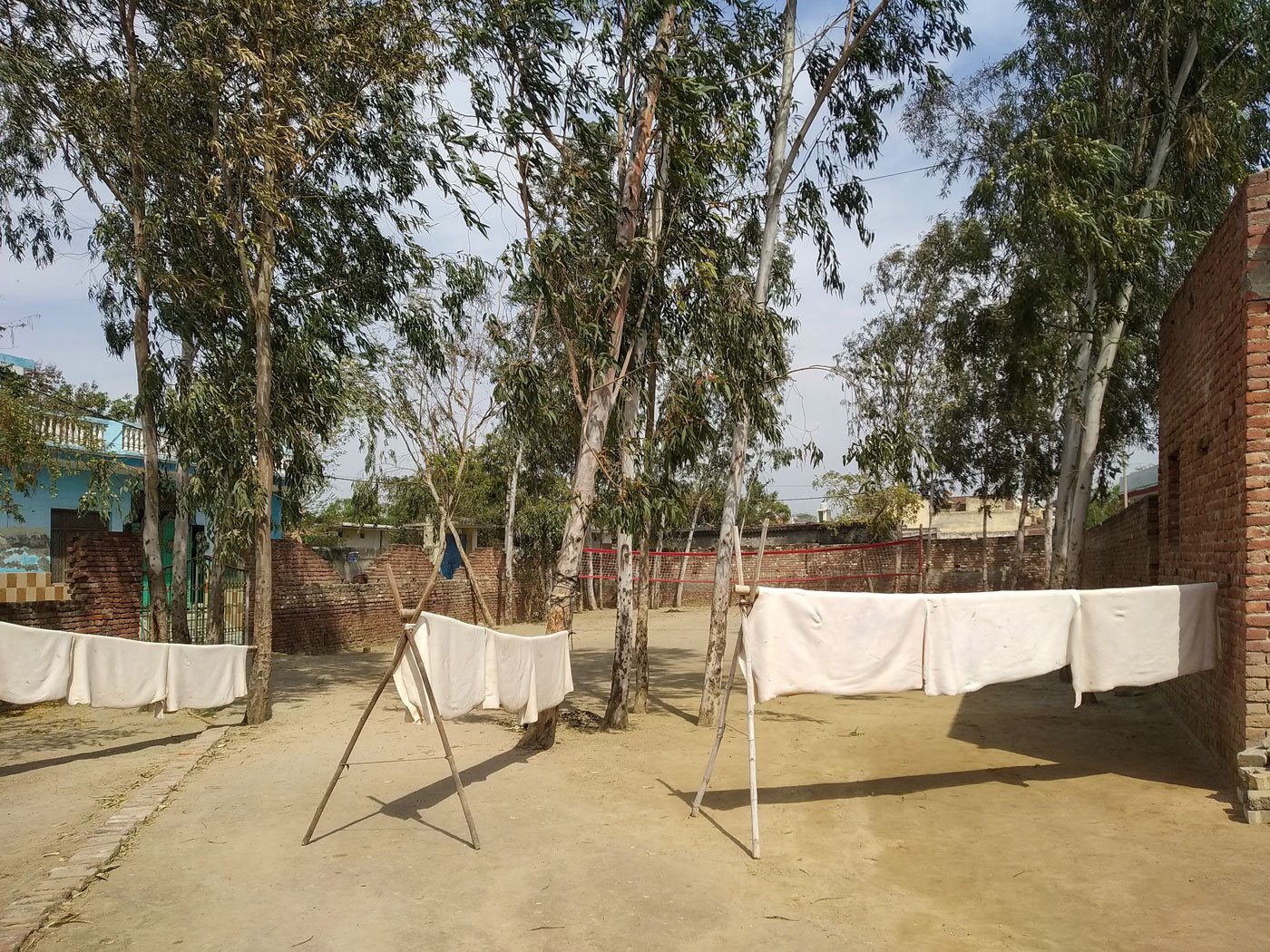
Left: Bharat Bhushan standing in the godown of his workplace, Shobhapur Tanners Cooperative Society Limited . Right: In Babu Lal’s tannery where safed ka putthas have been left to dry in the sun. These are used to make the outer cover of leather cricket balls
As we are speaking, another tanner, Bharat Bhushan walks in. The 43-year-old has been working in this industry since he was 13. Both men greet each other with, “ Jai Bhim ! [salute Ambedkar].”
Bharat pulls up a chair and joins us. Babu Lal asks me with a gentle reluctance, “ gand nahi aa rahi [can you not get the stench]?” He is referring to the strong smell of hides soaked in pits around us. Alluding to the stigma and aggression poured on those who work with leather, Bharat adds, “Actually, few people have longer noses than others – they can smell leather-work from a great distance as well.”
Babu Lal spells out Bharat’s remark saying, “In the past five to seven years, we are dealing with several problems because of our occupation.” Despite being the main suppliers to the biggest cricket companies in Meerut and Jalandhar for over 50 years, their lives are in danger and livelihoods curtailed by communal tensions. “In times of trouble no one stands by us. Humein akele hi sambhalna padta hai [We have to fight lone battles],” he adds.
The leather industry is one of India’s oldest manufacturing industries. It employs over four million people and produces nearly 13 per cent of the world’s leather, as of 2021-2022, according to the Council for Leather Exports which functions under the union Ministry of Commerce & Industry.
Almost all the tannery owners and workers in Shobhapur belong to the Jatava community (listed as Scheduled Caste in Uttar Pradesh). Bharat estimates that 3,000 Jatava households live in the locality and around “100 families are in this line of work today.” Shobhapur falls under Ward no. 12, which has a population of 16,931, and roughly half of the ward’s residents are members of SC communities (Census 2011).
Babu Lal owns one of the eight tanneries in Shobhapur slum that lies on the western side of Meerut city. “The final product we make is called safed ka puttha [whitened back part of hide]. These are used to make the outer cover of leather cricket balls,” says Bharat. Potassium aluminium sulphate, locally known as phitkari , is used to process the hides.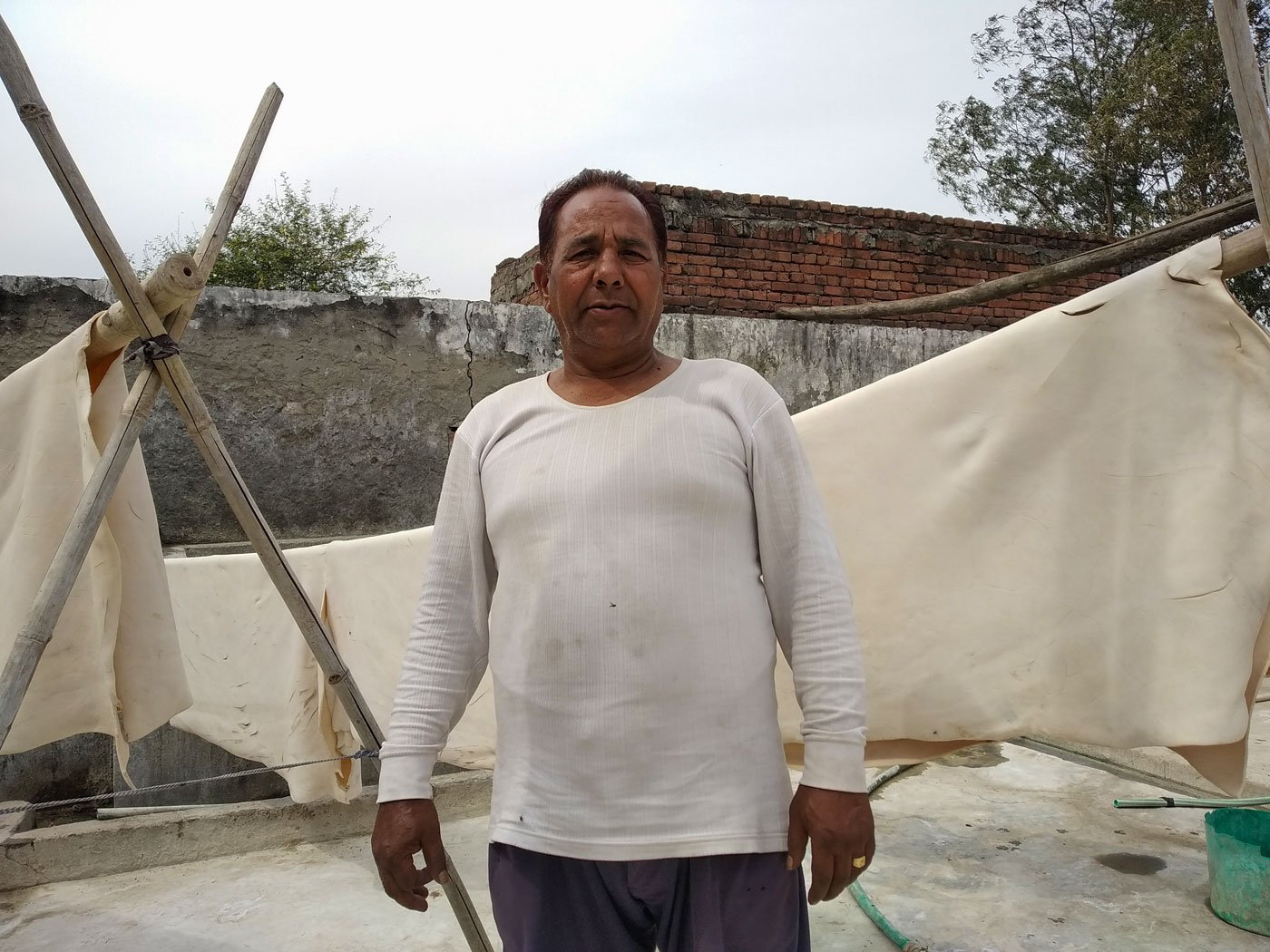
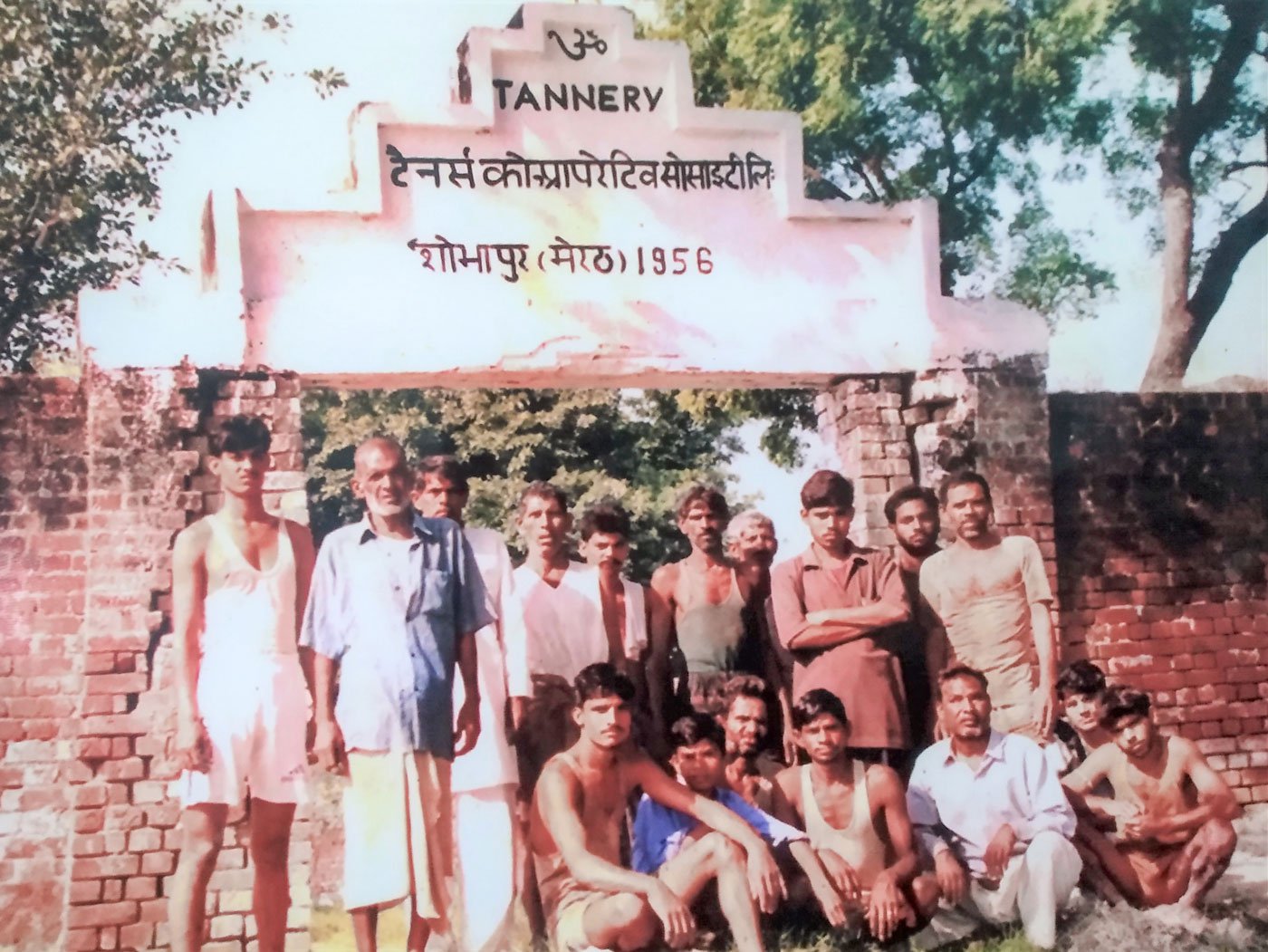
Left
: Babu Lal at his tannery. Right: An old photograph of tannery workers at Shobhapur Tanners Cooperative Society Limited, Meerut
It was only after Partition that sports goods manufacture shifted from Sialkot in Pakistan to Meerut. Babu Lal points across the highway to where a leather tanning training centre was opened in the 1950s by the district’s industries department to assist the sports goods industry.
Bharat says that some of the tanners came together and “formed a 21-member Shobhapur Tanners Cooperative Society Limited. We use the centre and share the cost of running it because we cannot afford running private units.”
*****
Bharat wakes up at dawn to buy raw materials for his trade. He takes a shared auto and travels five kilometres to reach Meerut station and catch the 5:30 a.m. Khurja Junction Express train to Hapur. “We buy the hides from the Hapur chamra painth [rawhide market] on Sundays where it comes from all over the country,” he says.
This weekly market in Hapur district is around 40 kilometres from Shobhapur and in March 2023, the price of a single piece of cowhide ranged from Rs. 500 to 1,200 depending upon its quality.
Babu Lal points out that the quality is impacted by the livestock’s diet, disease and more. “Hides from Rajasthan usually have marks of the thorns of keekar tree on them and the Haryana hides have tick marks. These are second grade.”
In 2022-23, over 1.84 lakh cattle deaths were reported on account of lumpy skin disease; hides were suddenly available in abundance. But Bharat says, “We could not purchase them as [they had] big marks and cricket ball makers refused to use them.”
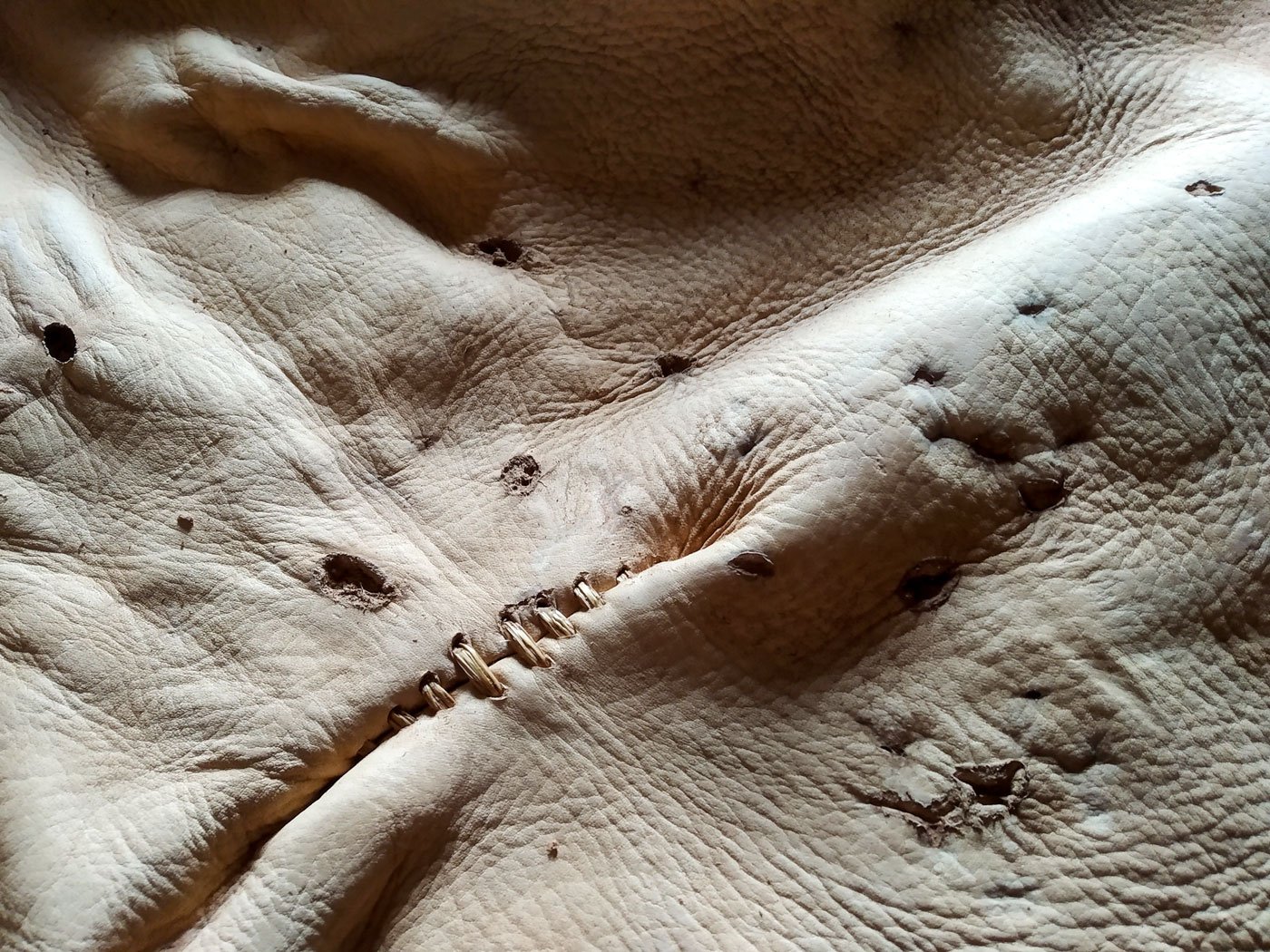
![But Bharat (right) says, 'We could not purchase them as [they had] big marks and cricket ball makers refused to use them'](/media/images/04b-IMG_20230303_151908-SS-Shobhapurs_leat.max-1400x1120.jpg)
Hide of cattle infected with lumpy skin disease (left). In 2022-23, over 1.84 lakh cattle deaths were reported on account of this disease. But Bharat (right) says, 'We could not purchase them as [they had] big marks and cricket ball makers refused to use them'
Workers in the leather industry say they were hit by a state government order released in March 2017 to shut down illegal slaughterhouses. It was followed shortly after by a central government notification preventing the sale and purchase of cattle in animal markets for slaughter. As a result, Bharat says today, “The market is less than half its [earlier] size. Sometimes, it has not opened on Sundays as well.”
Cow vigilantes have made people fear transporting cattle and hides. “Even registered interstate transporters fear carrying raw materials nowadays. The situation has become like this,” says Babu Lal.
In 2019, Violent Cow Protection in India, a Human Rights Watch report on cow vigilante attacks noted that, “between May 2015 and December 2018, at least 44 people –36 of them Muslims – were killed across 12 Indian states. Over that same period, around 280 people were injured in over 100 different incidents across 20 states.”
“My business is completely legal and receipt-based. Yet they have problems,” says Babu Lal.
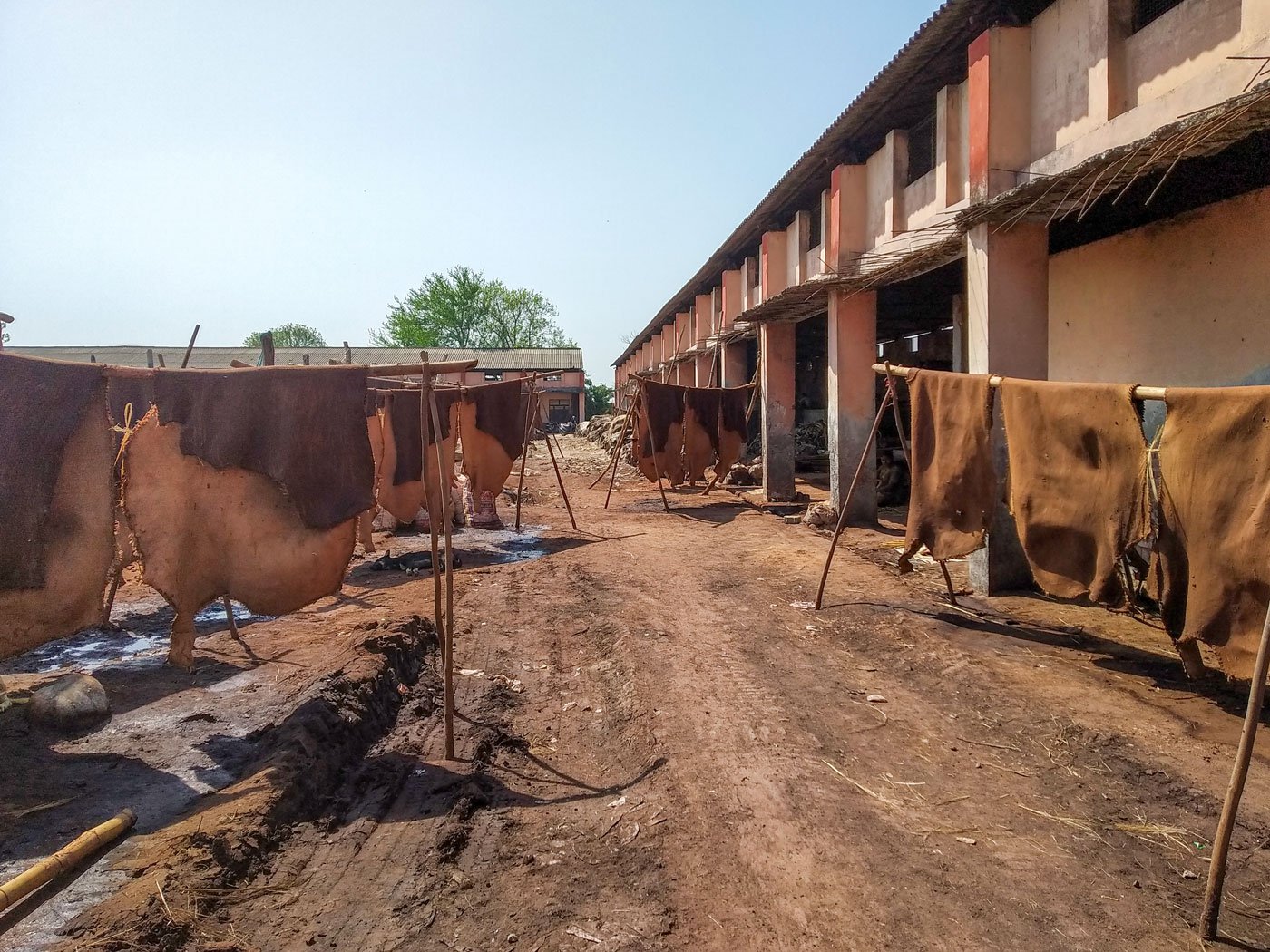
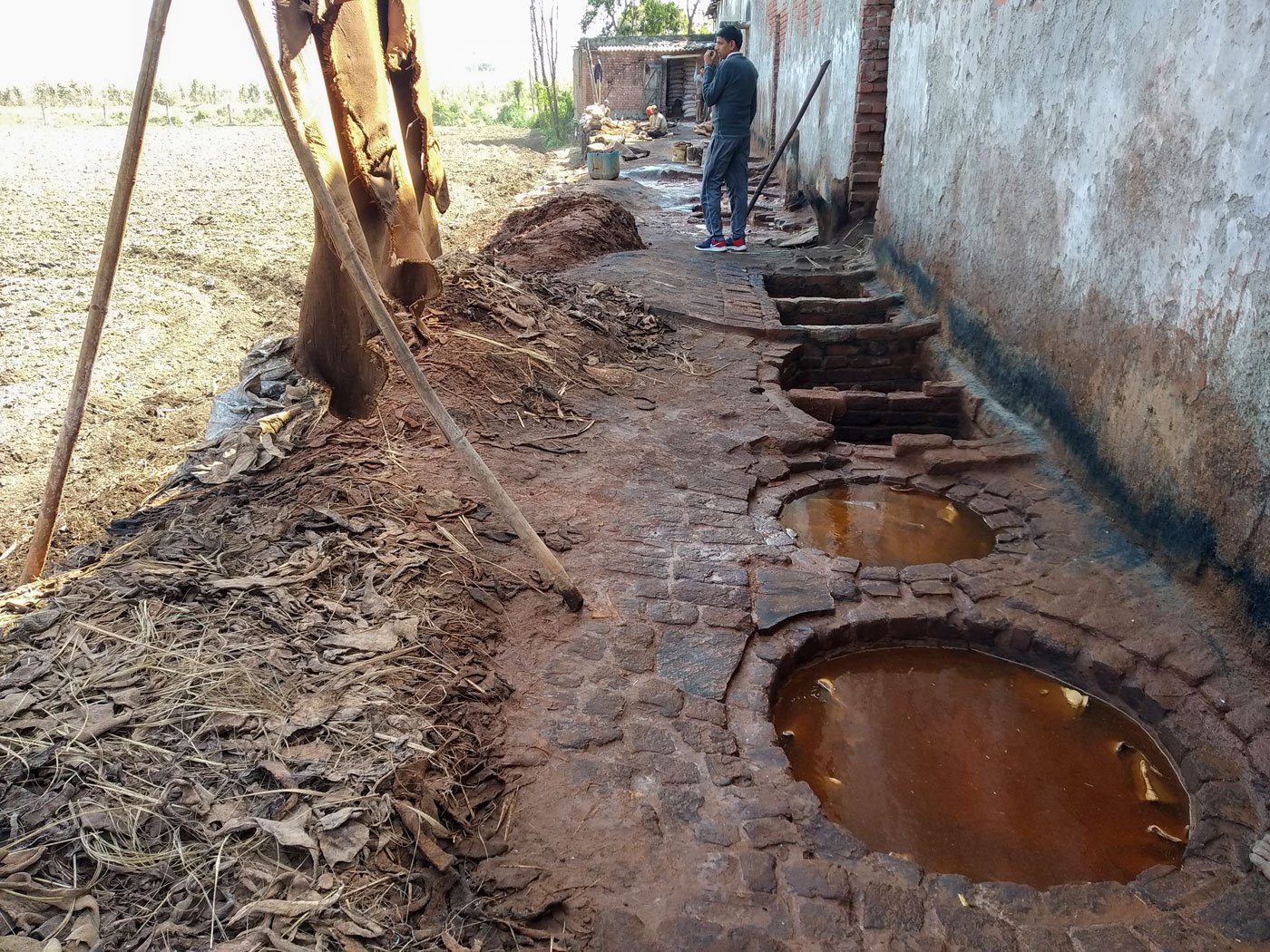
Left
: Buffalo hides drying in the sun at the government tanning facility in Dungar village near Meerut. Right: Bharat near
the water pits. He
says, 'the government constructed amenities for all stages of tanning here'
In January 2020, the tanners of Shobhapur were hit by another googly – a PIL was filed against them for causing pollution. “They also put another condition that no tannery work should be visible from the highway,” says Bharat, adding that all tanneries received shutdown notices by the local police instead of government facilitated relocation as mentioned in the PIL.
“ Sarkar humein vyastha banake de agar dikkat hai toh. Jaise Dungar mein banai hai 2003-4 mein [If there is a problem then the government should make proper arrangements for us, like they did by building a tanning facility in Dungar village in 2003-4],” says Babu Lal.
“Our concern is that the Municipal Corporation has not completed the work of laying down drains” Bharat says. It has been 30 years since the locality came under the Municipal Corporation. “During the monsoons water naturally collects in cut out residential plots which have not been levelled.”
*****
The eight tanneries in Shobhapur turn out hundreds of whitened hides used in making cricket balls. Tannery workers first wash and remove dirt, dust and soil, and earn around Rs. 300 for every hide they process to leather.
“After cleaning and rehydrating the hides, we segregate them based on their quality, especially their thickness,” says Babu Lal. Alum tanning the thicker hides takes 15 days. The thinner hides are vegetable-tanned in 24 days. “They are processed in lots, so a batch of leather is ready every day.”
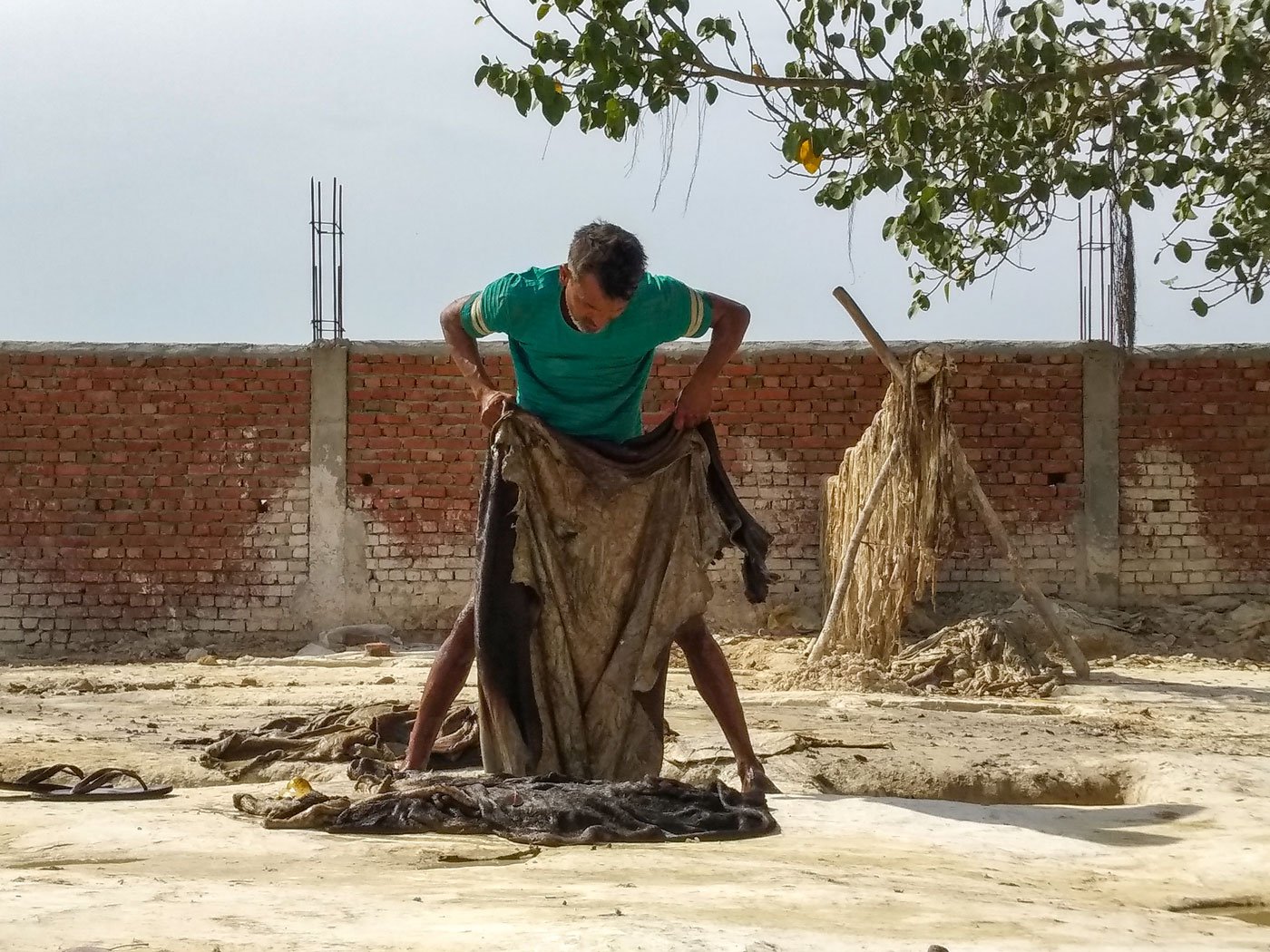

Left: A leather-worker washes and removes dirt, dust and soil from the raw hide. Once clean and rehydrated, hides are soaked in a water pit with lime and sodium sulphide. 'The hides have to be vertically rotated, swirled, taken out and put back into the pit so that the mixture gets equally applied to all parts,' Bharat explains. Right: Tarachand, a craftsperson, pulls out a soaked hide for fleshing
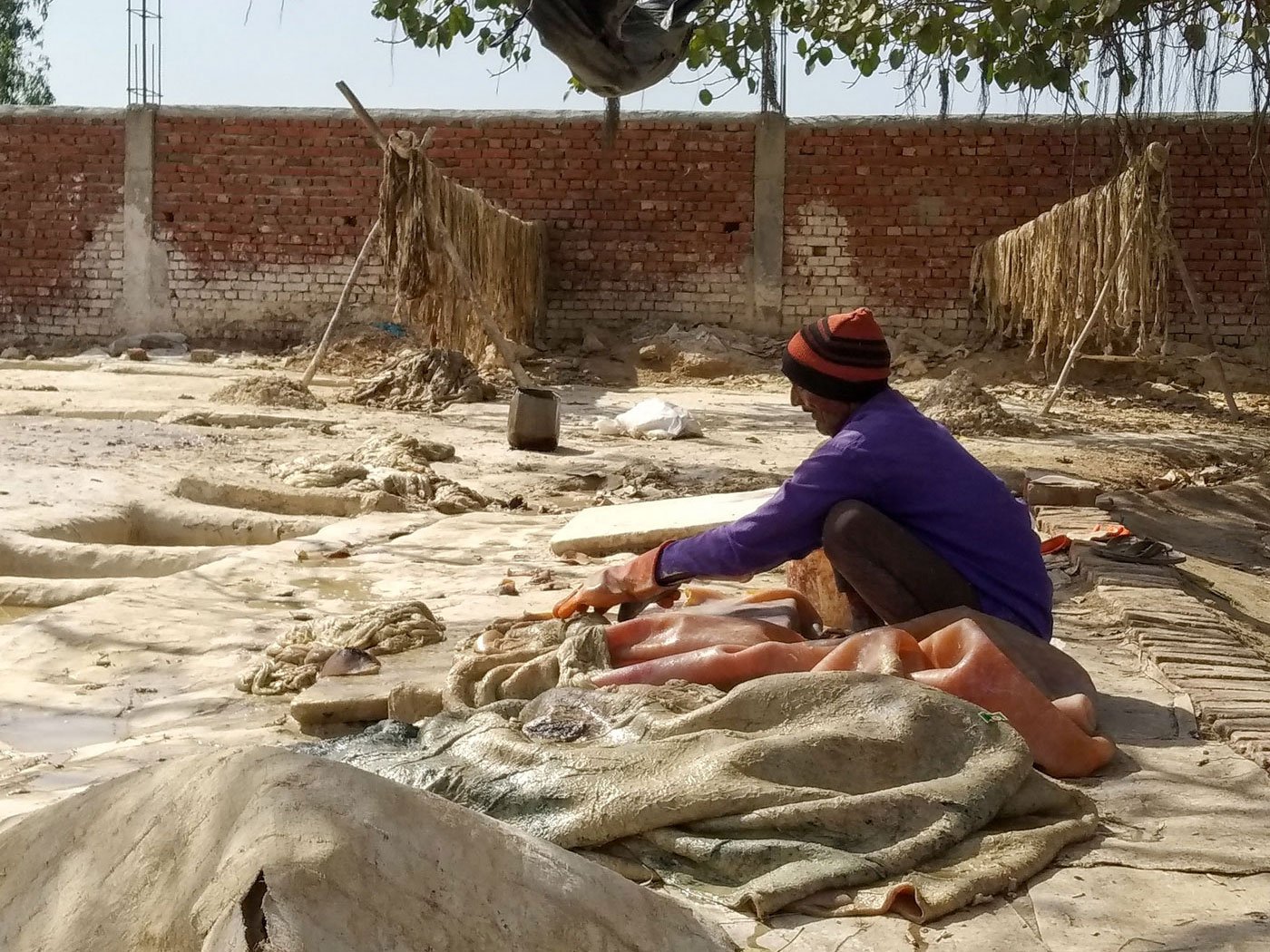
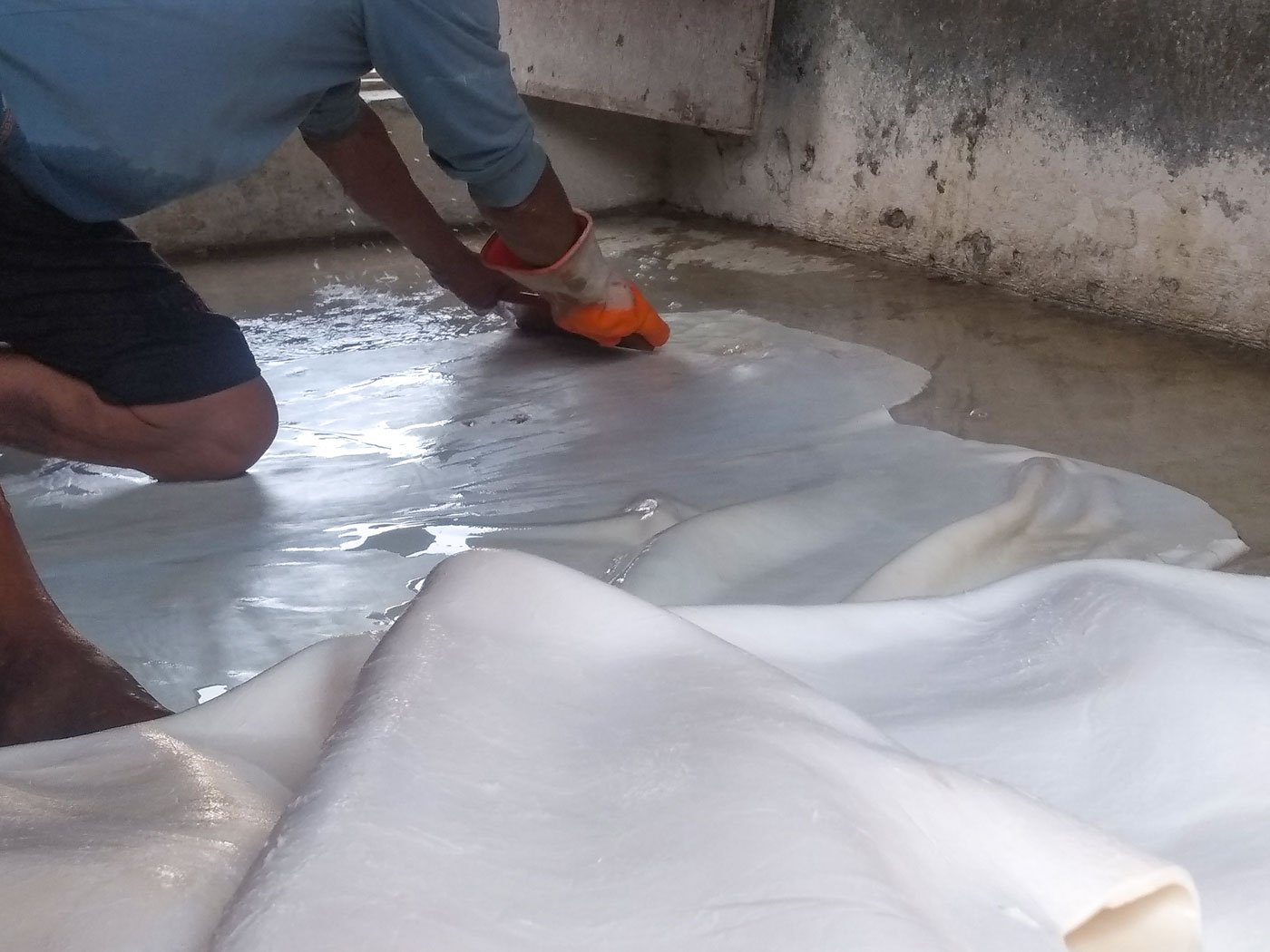
Left: A rafa (iron knife) is used to remove the flesh. This process is called chillai . Right: A craftsperson does the sutaai (scraping) on a puttha with a khaprail ka tikka (brick tile). After this the hides will be soaked in water pits with phitkari (alum) and s alt
Hides are then soaked in water pits mixed with lime and sodium sulphide for three days and then each piece is spread on flat ground and all hair is removed with a blunt iron tool – the process is called sutaai. “As the grains have swollen, the hair comes off smoothly,” says Bharat. The hides are re-soaked to plump them up.
Babu Lal’s master karigar (craftsperson) is 44-year-old Tarachand who uses a rafa or knife to painstakingly and delicately peel off flesh on the underside. The hides are then soaked in plain water for three days to remove traces of lime, and then soaked in water and hydrogen peroxide overnight. Babu Lal says it is done to disinfect and bleach. “ Ek ek karke saari gand-gandagi nikali jaati hai [Systematically, all the odour and filth are removed],” he adds.
“What reaches the ball makers is a very clean product,” says Bharat.
One processed hide is sold to cricket ball manufacturers for Rs. 1,700. Pointing at the butt portion of the hide, Bharat explains, “18-24 top or first quality cricket balls are made from here as it is the strongest part. The balls are called bilayti gend [foreign balls] and each is sold for more than Rs. 2,500 [in the retail market].”
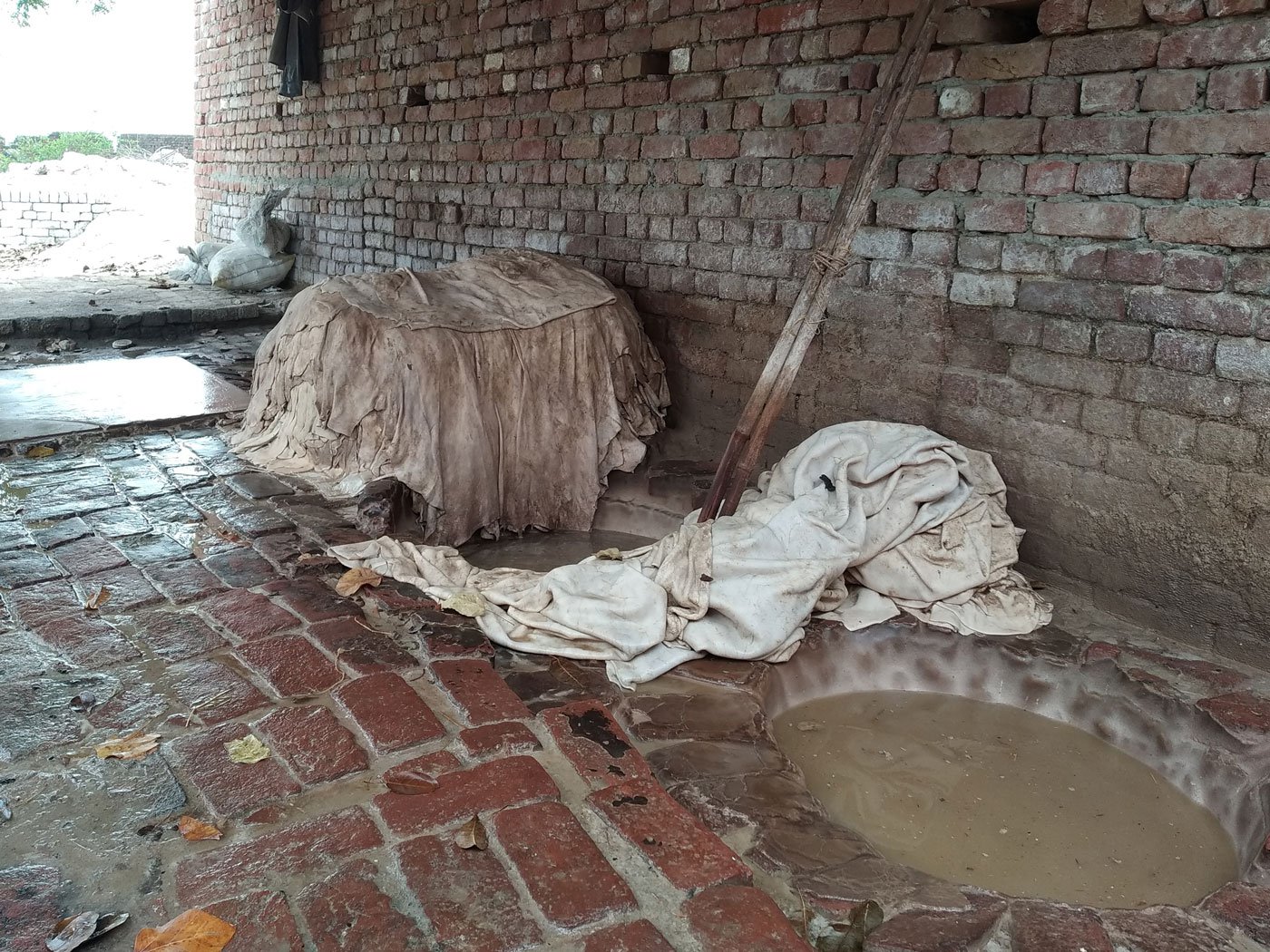
![Right: 'These have been soaked in water pits with boric acid, phitkari [alum] and salt. Then a karigar [craftsperson] has gone into the soaking pit and stomped the putthas with his feet,' says Babu Lal](/media/images/08b-IMG_20230304_122447-SS-Shobhapurs_leat.max-1400x1120.jpg)
Left
: Raw hide piled up at the Shobhapur Tanners Cooperative Society Limited. Right: 'These have been soaked in water pits with boric acid,
phitkari
[alum] and salt. Then a
karigar
[craftsperson] has gone into the soaking pit and stomped the
putthas
with his feet,' says Babu Lal
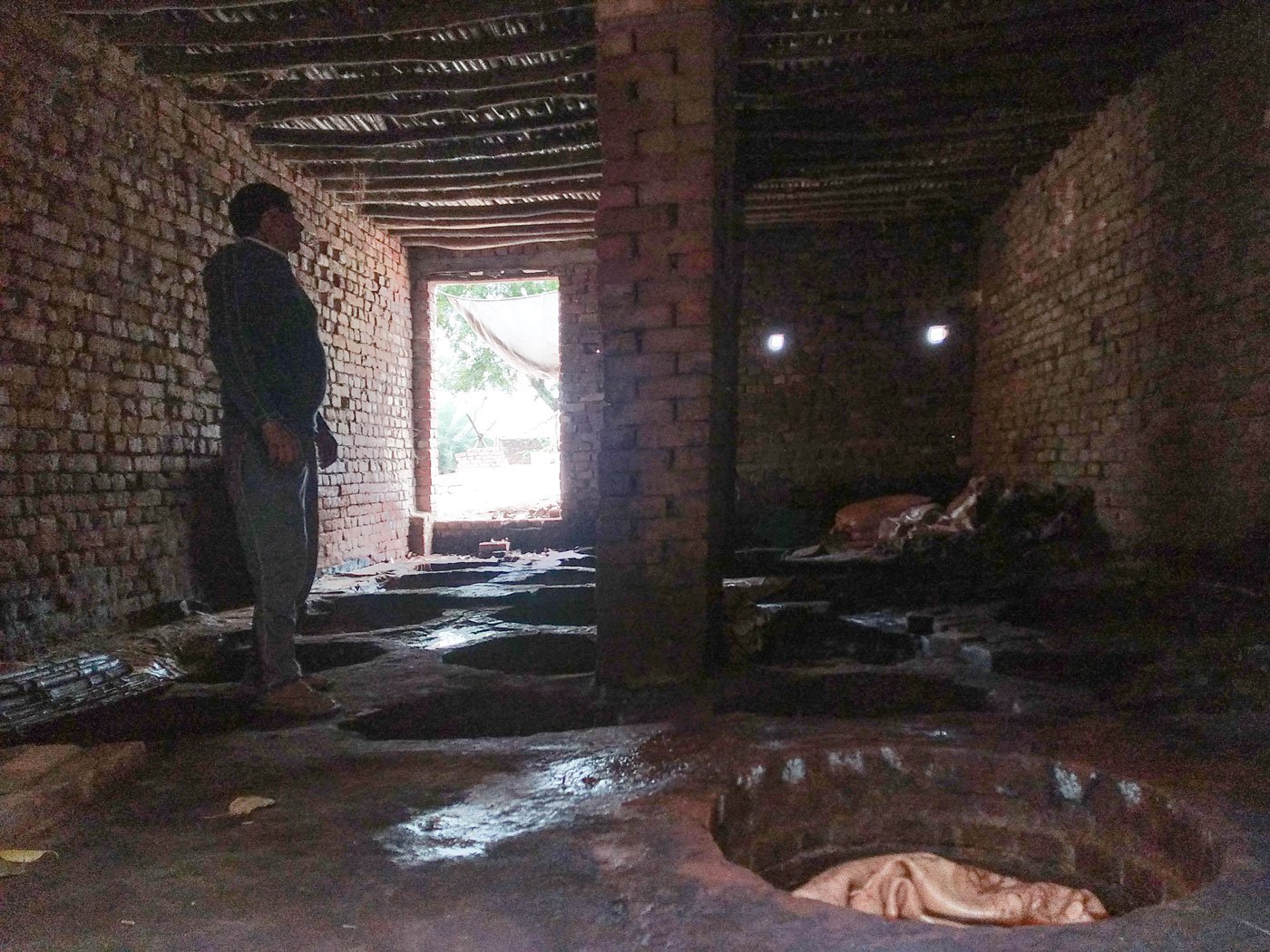
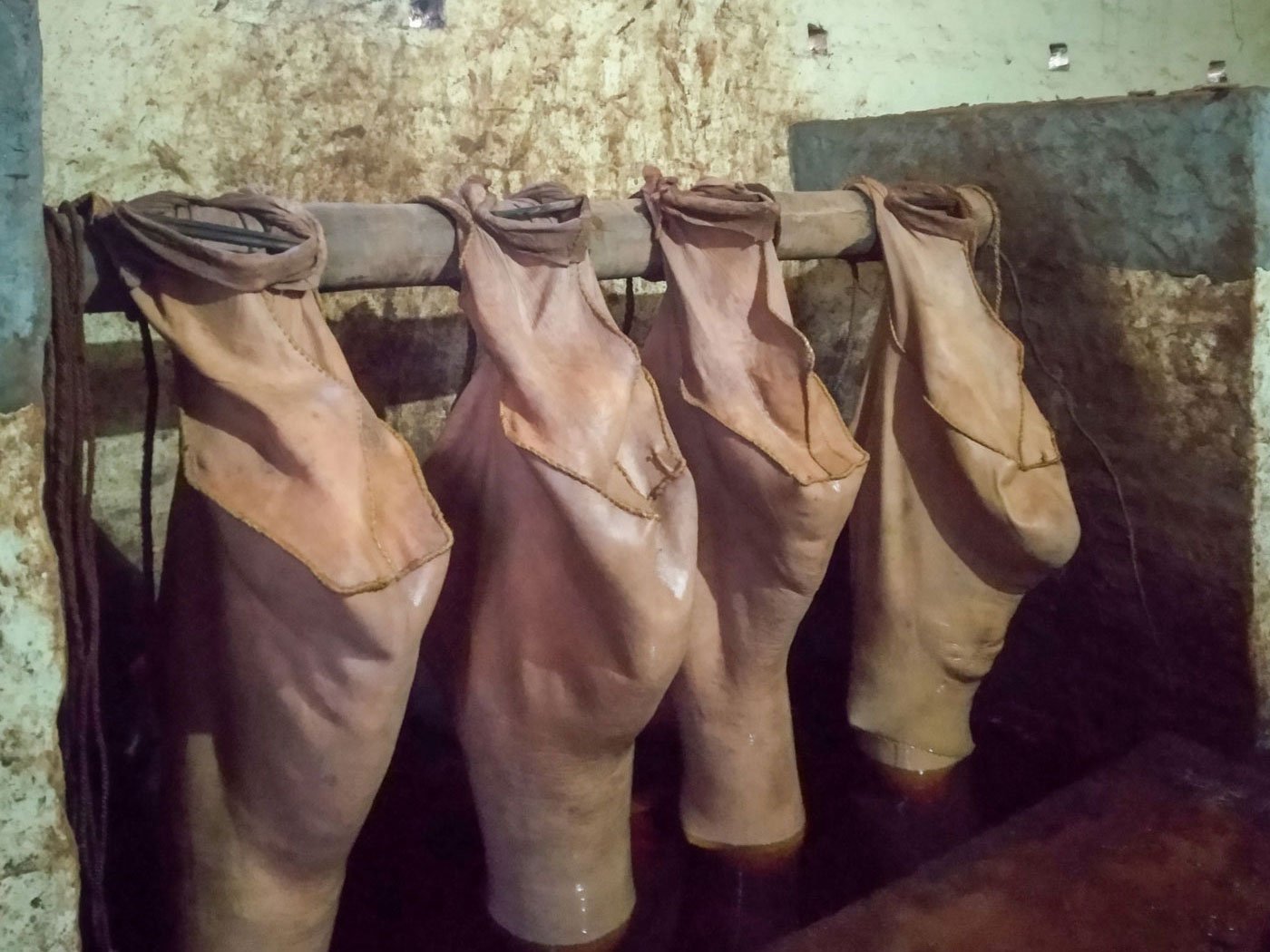
Left : Bharat in the Cooperative Society's tanning room. Right: 'Raw hide is made into a bag and bark liquor is poured into it t o seep through the hair grains for vegetable-tanning. Bharat adds , 'only poorer quality cricket balls, less water-resistant and with a hard outer cover are made from this process'
“The other portions are not as strong and also thinner, so balls made from these parts are cheaper, are played for lesser overs as they lose shape faster,” says Babu Lal. “A total of 100 balls of different qualities come out from one entire
puttha
. Even if each ball is sold for Rs. 150, a ball maker earns a minimum of Rs 15,000 per
puttha
,” Bharat calculates quickly.
“But what do we get from it?” Bharat looks at Babu Lal. They earn Rs. 150 per piece of leather sold. “Around Rs. 700 are spent on my karigars weekly wages and raw materials,” says Bharat. “The leather for these cricket balls is made by our hands and legs. But along with the names of big companies, do you know what else is stamped on the ball? ‘Alum-tanned hide’. I don’t know if players even know what that means.”
*****
“Do you really think pollution, smell, sight are the actual problems [in the industry]?”
The sun is now setting in the horizon behind sugarcane fields here in western UP. Tannery-workers are taking a quick bath in their workplace and changing out of their work clothes before heading home.

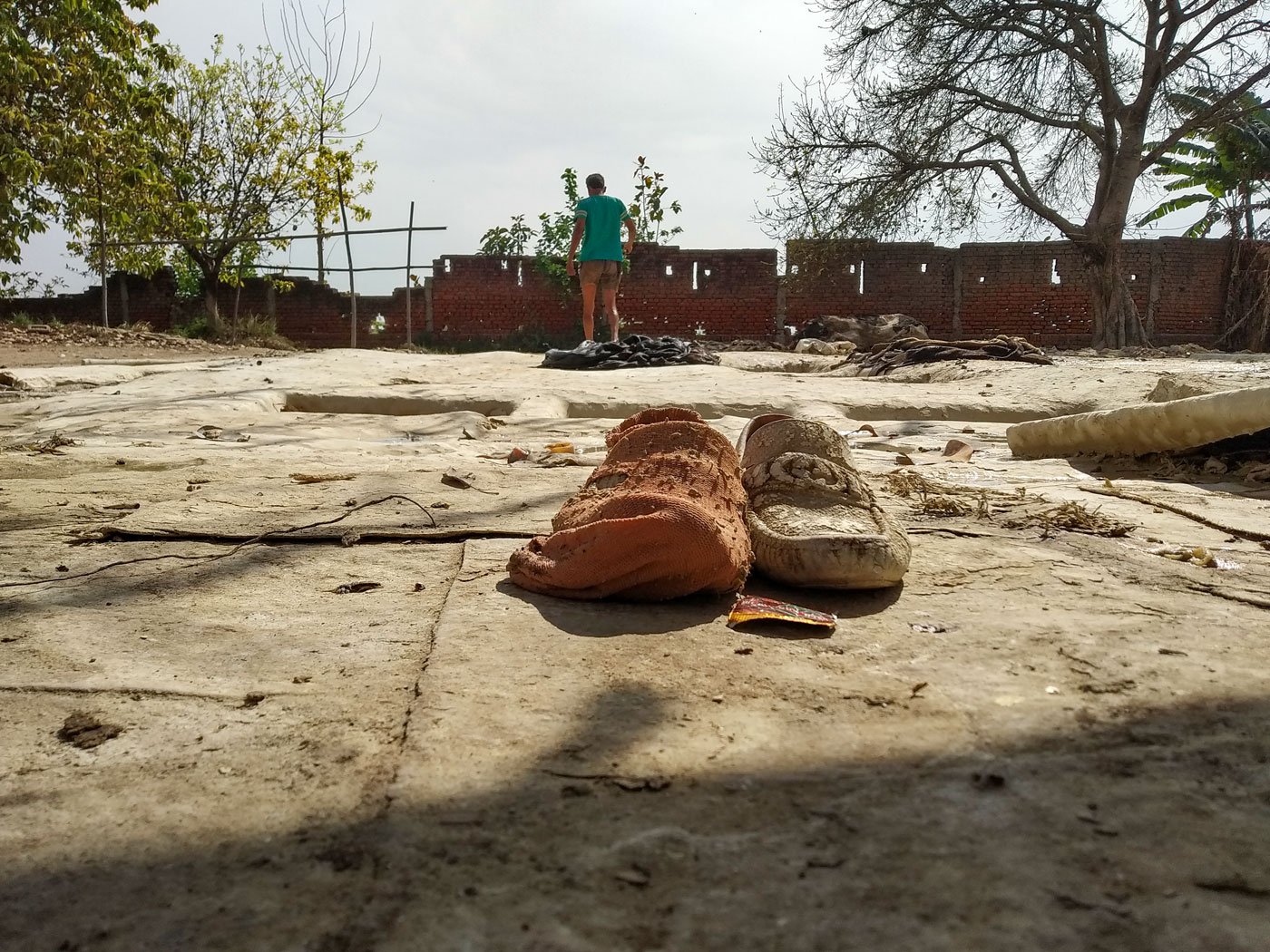
The smell of raw hide and chemicals hangs over the tannery. Workers take a quick bath and change out of their work clothes (left) before heading home
“I mark my leather as ‘AB’ based on my son’s initials,” says Bharat and adds firmly, “I will not let him take up leather-work. The next generation is getting educated. They will progress and leather-work will come to an end.”
As we walk towards the highway, Bharat says, “We are not passionate about leather-work, as one is about playing cricket. [This work] sustains our livelihoods; we do not have an alternative so we do it.”
The reporter would like thank Praveen Kumar and Bharat Bhushan for sparing their valuable time, and helping at all stages in reporting this story. This story is supported by a fellowship from Mrinalini Mukherjee Foundation (MMF).
